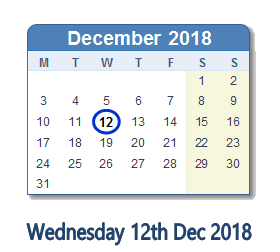Appendix3 Exam 2017 & 2018 which were scheduled from 26.11.2018 is postponed to the following dates
From 12.12.2018 to 21.12.2018
Click below for Railway Board corigendum

<
Designed to help the candidates appearing the Appendix 3, LDCE, 70% etc of Railway Accounts

Group
|
Description
|
Erstwhile
Demand No.
|
|||
Major Head
|
Description / Sub Major Head (SMH)
|
||||
Policy Formulation and Services Common to all Railways
|
Railway Board
|
1
|
3001
- Indian Railways Policy formulation, Direction, Research
& other miscellaneous organisations
|
Railway Board
|
|
Miscellaneous Expenditure (General)
|
2
|
Miscellaneous Expenditure (General)
|
|||
General Superintendence and Services on Railways
|
General Superintendence and Services on Railways.
|
3
|
3002
Indian Railways Commercial
Lines - Working Expenses
|
1
|
|
Repairs
& Maintenance
|
Permanent Way and Works.
|
4
|
2
|
||
Motive Power.
|
5
|
3
|
|||
Carriages and Wagons.
|
6
|
4
|
|||
plant and Equipment
|
7
|
5
|
|||
Operating
Expenses
|
Rolling Stock and Equipment.
|
8
|
6
|
||
Traffic.
|
9
|
7
|
|||
Fuel.
|
10
|
8
|
|||
Staff Welfare, Retirement Benefits and Miscellaneous
|
Staff Welfare and Amenities.
|
11
|
9
|
||
Miscellaneous Working Expenses.
|
12
|
10
|
|||
Provident Fund, Pension and other Retirement Benefits.
|
13
|
11
|
|||
Railway Funds and payment to General Revenues.
|
Appropriation to Funds i.e., DRF & Pension Fund
|
14
|
12
|
||
Dividend to General Revenues, Repayment of loans taken from General Revenues and Amortization of over Capitalisation.
|
15
|
3005
|
Nil
|
||
Capital
& Other Works Expenditure
|
Assets-Acquisition,
Construction and Replacement
|
16
|
5002-
Capital Outlay on Indian Railways Commercial Lines
|
01 & 02
Capital segment
|
|
Bad debts
|
Doubtful debts
|
|
1.
There is no possibility that a money will be collected from the Debtors.
|
1.
There is a possibility that the money will be collect from Debtors.
|
|
2.
Bad debt has a direct relation with the doubtful debt because when the
possibility to collect money ends, a bad debt occurs.
|
2.
Doubtful debt doesn’t depend on the bad debt.
|
|
3.
A bad debt is written off and it is accounted as an expense in the Profit and
Loss account duly deduct from Sundry Debtors in the Balance Sheet or adjust
in the Provision for Bad and Doubtful Debts.
|
3.
As a precaution, Company creats a Provision/ Reserve (certain percentage of
Total debtors value) by debited to Profit and Loss Account and deduct the
Same from Sundry Debtors. Here it is
not an expense, but as a Reserve.
|
|
Journal
|
Ledger
|
|
1. Book of Original entry
|
1. Book of Final entry
|
|
2. It is a Subsidiary Book
|
2. It is a Principal Book
|
|
3. It is prepared from the vouchers, receipts, bills, etc
|
3. It is prepared from the Journal.
|
|
4. Transactions are recorded in the
journal in chronological order.
|
4. Transactions are posted in the
ledger in classified form.
|
|
5.Narration is required
|
5. Narration not required
|
|
6.There is no scope for balancing
the Journal
|
6. Balancing the Ledger is must
|
|
7. Journal is the
Basis for Ledger.
|
7. Ledger is the basis
for Final Accounts i.e., Profit & Loss Account and Balance Sheet.
|
|
8. In journal, ledger folio (L.F.)
is written.
|
8. In ledger, journal folio (J.F.) is written.
|
|
9. Recording of the
transactions in the journal is called journalizing.
|
9. Recording of
transactions in the ledger is called posting.
|